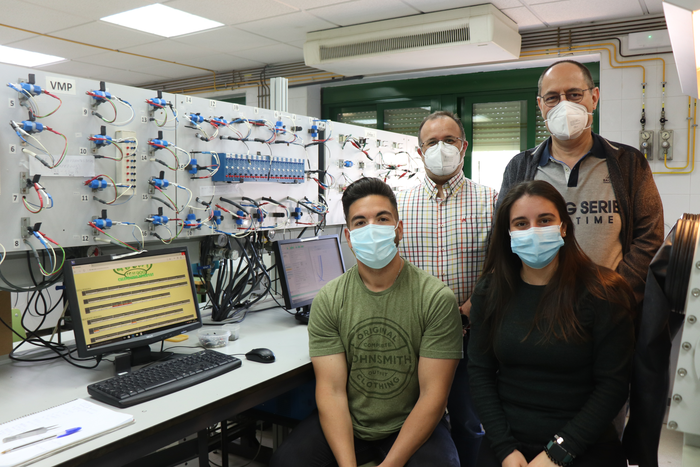On a laboratory scale, the feasibility of magnesium batteries utilizing a new compound as a cathode has been studied by a research group from theUniversity of Córdoba(UCO). This was done in collaboration with the University of Xiamen and the Bulgarian Academy of Sciences.
 科尔多瓦大学的研究人员。图片来源:科尔多瓦大学。
科尔多瓦大学的研究人员。图片来源:科尔多瓦大学。
Lithium-ion (Li-ion) batteries have controlled the market to power electronic devices since the 1990s. But this material has been burdened with a few issues, like its scarcity and geographical concentration, primarily discovered in regions of Asia and Latin America.
It has also been shown that the mines from which lithium can be obtained are, at present, unable to fulfill the predictable future demand produced by the increase of electric vehicles.
如果我们想用由锂离子电池供电的汽油和柴油车代替汽油和柴油车,明天我们将不够.
卡洛斯·佩雷斯·维森特(CarlosPérez-Vicente),科尔多巴大学研究员
科学界经历了这些缺点,因此正在寻找锂,铝,镁和钙等锂的替代品。
The FQM288 research team at the UCO has reported their outcomes concerning the viability of magnesium batteries by making use of a new compound (a manganese oxide and magnesium) as a cathode under highly specific conditions (with the cations taking up controlled positions in tetrahedral and octahedral voids). The study was published in the journalEnergy Storage Materials.
所有电池均由3个元素制成:阴极,阳极和一个电解质,它们的关系产生了解放可用能量的化学反应。在这项研究中,镁金属被用作阳极(电池的负极)。
This material has few benefits over lithium: being metallic, it has a bigger capacity compared to the present anodes of Li-ion batteries, and it does not generate dendrites (deposits that impact the safety of the battery, thereby leading to short-circuit). This is something that did happen with the lithium metal batteries.
产生反应是一项高度复杂的任务,而镁金属有可能使电池容量增加一倍。
Not just any material can work with magnesium; there must be theoretical and experimental preliminary studies that lead to success.
Gregorio Ortiz,科尔多巴大学研究员
因此,必须将镁金属与适当的阴极(电池的正极)集成。研究人员在研究中用作阴极的材料被称为镁氧化镁Mg2mno4,以稳定的结构给出。
这种化合物带来了产生电池能量的还原和氧化(氧化还原)过程。在此过程中,阴极的(锰)金属减少了,并将电子(镁)的金属释放到接收并氧化的阳极(镁)的金属上。
离子传输是通过电解质进行的,这是电池的第三个组件,该电池结合了阳极和阴极。在研究中,利用了非水电解质,从而可以用更高的电压运行。
The study is a part of the research project that started in 2018 and involves the University of Xiamen, the University of Cordoba, and the Bulgarian Academy of Sciences, thereby mixing theoretical calculations along with an experimental component where methods like X-Ray diffraction, electron microscopy, electronic paramagnetic resonance, and photoelectron spectroscopy have been utilized.
For the success of these scientific advances, interaction with researchers in China and Professor Ortiz’s leadership has been fundamental. They have confirmed that magnesium batteries with the manganese compound helped increase their capacities up to 3.1 V. This implies that their energy density, at the laboratory scale, is around 335 Wh/kg, constituting 60% of lithium-ion batteries’ energy density.
这是一个进步,如较早的研究,最多2.2 V从未超过。但是他们发现,在充电和排放周期时,电池的最初容量将其切成两半。
With new scientific strategies, the initial capacity might be recovered.
Gregorio Ortiz,科尔多巴大学研究员
The outcomes achieved by the study are hopeful, indicating that batteries that complement lithium ones are possible. But this formula has only just been tested at the laboratory level, so we will have to wait to see how it performs at a real scale, which would need the industry to invest money in the development of such batteries.
Journal Reference:
Ruiz,R.,et al. (2022) A Cubic Mg2mno4非水镁电池的阴极。Energy Storage Materials.doi.org/10.1016/j.ensm.2022.02.047.
Source:https://www.uco.es/